The Stories of the 19 Crimes Convicts
19 Crimes. You’ve heard of the wine. Seen it in the bottle shops, and possibly even enjoyed a bottle (or two). And maybe even read my earlier blog posts about them.
So what is it you like about the 19 Crimes wine that you like?
Is it the corks (or lids for the bottles that are available in Australia), each which lists a transportable crime? Is it the wine itself? Or is it the convicts?
For me it was the convicts. But hey, I’m a genealogist, with a love of history and convicts, so OF COURSE I was going to love these!!
But, do you know the stories of those that feature on the 19 Crimes wine labels? No? They were real people, each who had their lives changed by being transported to Australia for their crime. So let me tell you a little of their stories.
——————————————————
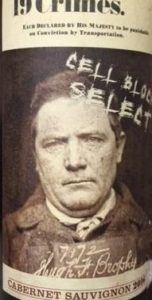 Hugh Brophy (1829-1919) (Cabernet Sauvignon)
Hugh Brophy (1829-1919) (Cabernet Sauvignon)
Crime: treason and felony
Sentence: 10 years
Ship & Departure date: 10 October 1867, Hougoumont
Sent to: Fremantle Prison, Fremantle, Western Australia
Hugh Brophy was a leading Fenian and staunch supporter of Irish independence. He was convicted for his part in a plot to overthrow the perceived tyranny of the British and was sentenced to penal servitude, however this changed to transportation for life to Australia.
Despite many of the Fenians having received long sentences in exile, there was a huge outcry in England, Ireland, and also in Western Australia about imprisoning and transporting them. So much so, that Queen Victoria decreed some of the Fenians should be pardoned. Instructions dated 26th March 1869 were sent from England, and granted 34 civilian Fenians the benefit of the royal clemency “without delay”. “They were assembled as soon as possible at Guildford where on 15 May 1869, they received their free pardons”. Hugh Brophy was one of them.
Hugh then went into partnership with fellow convict Joseph Noonan, establishing a highly successful bridge building and construction company. They won a number of contracts from the Catholic Church, the government, and private enterprise, and hired ticket-of-leave men to do stone cutting, carpentry and labouring. Eventually, Brophy left the partnership and went to Melbourne in 1872. Brophy died on 11th June 1919, and is buried at Melbourne General Cemetery.
——————————————————
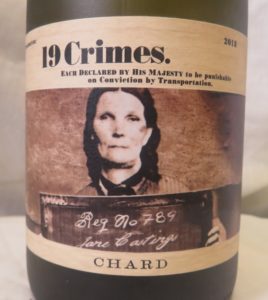 Jane Castings (c1813-1895) (Hard Chard)
Jane Castings (c1813-1895) (Hard Chard)
Crime: Knowingly receiving stolen goods
Sentence: 7 years
Ship & Departure date: 8 May 1846, Sea Queen
Sent to: Cascade Female Factory, Hobart, Van Diemen’s Land
Born in Leicester as Jane Pratt, Jane married Henry Castings, had 4 young children, and was employed as a housemaid, when in 1846 she was sentenced to 7 years transportation for “receiving cheese and bacon knowing the same to have been stolen”. Jane had long been ‘suspected’ as being a fagin, meaning she trained and paid a group of teenage boys to steal the goods that she requested, but worse was that she was the cause of six young boys being transported ‘beyond the seas’. You can read plenty more about Jane Castings here.
Jane served her 7 years, was granted her Certificate-of-Freedom, and in 1853 she married ex-convict David Hayes in Hobart and had several children. Jane is buried in the Swansea Cemetery, Tasmania.
——————————————————
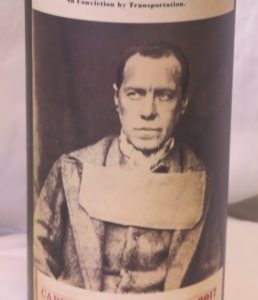 Michael Harrington (1825-1886) (Cabernet Sauvignon)
Michael Harrington (1825-1886) (Cabernet Sauvignon)
Crime: Irish rebel (Mutinous conduct and Desertion)
Sentence: Life (escaped)
Ship & Departure date: 10 October 1867, Hougoumont
Sent to: Fremantle Prison, Fremantle, Western Australia
Best known for orchestrating one of the most daring escapes from Australia. In 1876, Harrington, along with six others, braved a massive typhoon in just a tiny rowboat to board an American whaling ship in what is now remembered as the Catalpa Rescue. There’s a great article about this on the Smithsonian magazine site.
From the New York Times dated 14 February 1886, we learn that “Michael Harrington, the eldest of the six Fenian prisoners who were rescued from New South Wales by the American whaler Catalpa in 1876, died on Friday night of pneumonia at the residence of his brother-in-law, Edward Whelan, No. 111 East One Hundred and Eighth-street.”
——————————————————
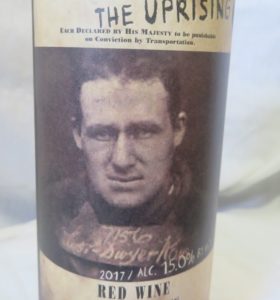 Cornelius Dwyer Kane (1839-1891) (Red Wine, The Uprising)
Cornelius Dwyer Kane (1839-1891) (Red Wine, The Uprising)
Crime: Treason
Sentence: 10 years
Ship & Departure date: 10 October 1867, Hougoumont
Sent to: Fremantle Prison, Fremantle, Western Australia
Cornelius Dwyer Kane (aka Keane), a law clerk from Skibbereen, County Cork, Ireland was convicted for treason and transported on the Hougoumont. Conditionally pardoned in 1871, he was forbidden from returning to Ireland, So he never reunited with his wife and children there.
He did however, settle in Queensland and became a civil servant.
Cornelius died in October 1891 and is said to be buried somewhere in an unmarked grave on the goldfields in north Queensland.
The Uprising label is said to be a tribute to the Rum Rebellion that took place in New South Wales in 1808.
——————————————————
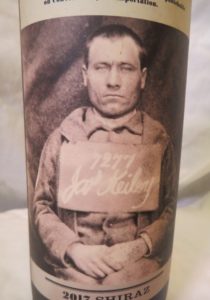 James Keiley (c1840-……. ) (Shiraz)
James Keiley (c1840-……. ) (Shiraz)
Crime: Treason, not informing of a mutiny
Sentence: Life
Ship & Departure date: 10 October 1867, Hougoumont
Sent to: Fremantle Prison, Fremantle, Western Australia
Born James Michael Keiley in Colligan, County Waterford, James was a member of the 53rd Regiment and stationed in Tipperary, Ireland. At the time soldiers were employed to evict the poor peasants, which no one could help but sympathise with. And as such, Fenian uprisings were happening all over Ireland.
Married with two young children, James was convicted of High Treason for creating skeleton keys to get into the armory, and taking 2000 rifles which he distributed to fellow members. However he and a number of others were caught before the riots there took place, and he was sentenced to transportation “for life”.
James also played a part in the “Catalpa Rescue”, which obviously didn’t go to plan, as he was left behind.
In 1905, after having served 38 years, James was granted a pardon by the King. There’s a great article on Trove about this here. Note: James’ surname is sometimes spelled Keily, Keilly, Kiely or Kieley.
——————————————————
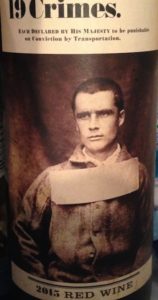 John Boyle O’Reilly (1844-1890) (Red Blend)
John Boyle O’Reilly (1844-1890) (Red Blend)
Crime: Irish rebel
Sentence: Sentenced to death, was later transported for 20 years instead (escaped after 2 years)
Ship & Departure date: 10 October 1867, Hougoumont
Sent to: Fremantle Prison, Fremantle, Western Australia
While in his teens, John O’Reilly lived with his aunt and uncle in Lancashire, and took up work on local newspaper the Preston Guardian, and in June 1861, he enrolled in the 11th Lancashire Rifle Volunteers, with which he received some military training.
On returning to Ireland in March, 1863, he enlisted with the 10th Hussars in Dublin. While O’Reilly was in the army he began to witness the treatment and oppression of his fellow citizens in Ireland, these events influenced his opinion on the army and he was determined to take action.
As a youth in Ireland, he was a member of the Irish Republican Brotherhood, or Fenians, for which he was transported to Western Australia.
Not wanting to face a lifetime in chains, in February 1869, O’Reilly absconded from his work party and met up with James Maguire, a local settler and together they rowed out into the Indian Ocean.
It took until the end of 1869 to make it to the United States, but once there he became a prominent spokesperson for the Irish community and culture, through his editorship of the Boston newspaper The Pilot, his prolific writing, and his lecture tours.
On 15 August 1872 John O’Reilly married Mary Murphy (1850-1897), a journalist who wrote for the ‘Young Crusader’ under the name of Agnes Smiley, and they had four daughters.
For more on John O’Reilly click here and here.
——————————————————
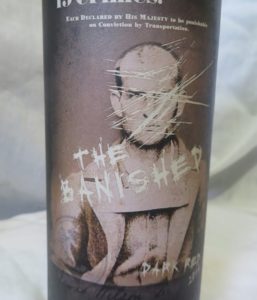 James Wilson (1836-1921) (Dark Red, The Banished)
James Wilson (1836-1921) (Dark Red, The Banished)
Crime: Irish rebel
Sentence: Sentenced to death, was later transported for Life instead (escaped)
Ship & Departure date: 10 October 1867, Hougoumont
Sent to: Fremantle Prison, Fremantle, Western Australia
Born James McNally in Newry, County Down, Ireland in 1836, he joined the British Army at the age of 17 (enlisting under a false name), before returning to Ireland where he became a Fenian in 1864 as he was disenchanted with the army and their treatment of people.
On 10 February 1866, he was arrested and along with other military Fenians was tried, found guilty of desertion and mutinous conduct, and sentenced to death. However, this sentence was later commuted to penal servitude for life, and they were transported to Western Australia. In October 1867, Wilson and sixty one other Fenians began the long sea voyage on board the Hougoumont to Australia.
In 1876, the American ship “Catalpa” sailed to Western Australia and rescued Wilson and five other Fenian prisoners, and over a period of 4 months, made it’s way to New York.
Wilson settled in Rhode Island, where he married and lived out the rest of his life. He died on 6 November 1921, and his remains are buried in the cemetery at St Mary’s Church in Pawtucket, Rhode Island. For more on James Wilson, click here.
——————————————————
So as you can see, they all have a story. They all had a life that was radically changed by being transported. And they are all part of Australia’s history, and I’m pleased that the are being remembered.
And just one last note, please be aware that this list is a work-in-progress. I know that more bottles have already been released, and I’m still working on identifying those, and will add them when I have. And as new bottles in the range are released, I’ll get those added to the list as well. Also if you have 19 Crimes bottles other than those listed above, please send me a photograph. I’m aware that different bottles are being released in different countries, so tracking them all is interesting, but I’ll keep trying.





Interested to read about Jane Castings, born in Leicester, and transported for “receiving cheese…”. Another person from Leicester, Edmund Tew, was convicted around the same time for stealing cheese and also transported to Australia. An Australian cheesemaker working in England recently named a cheese after him. See http://www.blackwoodscheesecompany.co.uk/#cheeses
By coincidence one of my grandchildren is also named Edmund Tew and his mother is Australian, so the cheese is a favourite at family lunches. Another Australian connection: One of Edmund’s great-great-great grandmothers, born Marion Kate Dove, was a member of the Dove family responsible for building Australia House in London about a century ago.
Wow, that’s so cool to have a cheese named after him. I see the article says he’s the “first cheese in our convict series”, so that’ll be an interesting one to watch too.
Hi Alona,
Thank you for linking Jane Castings story to my Blog. We have had fun with her bottle of white, with relatives. It is quite spooky to hear her talking to us ‘from the grave’ so to speak. we were contacted to okay the company including Jane. They used info from my Blog and what they obtained from our phone conversations from the USA to Australia. Not so keen on the actual wine, although I reckon Jane wouldn’t have minded it !
Love this. I’m sharing.
Laura
What fun! Often “bad guys” look like the “boy next door.” Not this crowd…would not want to meet any of these men or women in a dark alley. Am bringing one of these bottles and your post to a party on Saturday.
This is the first time I have seen these wines but I am with you on wanting to know the story behind each one. I will be on the look out for these now. Great post! Sharon
I think I’m related to Hugh Brophy. My father is the spitting image of him.
Thank you for the interesting stories. Makes for great dinner conversations. Really appreciate this post.